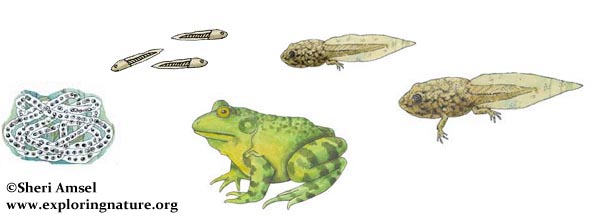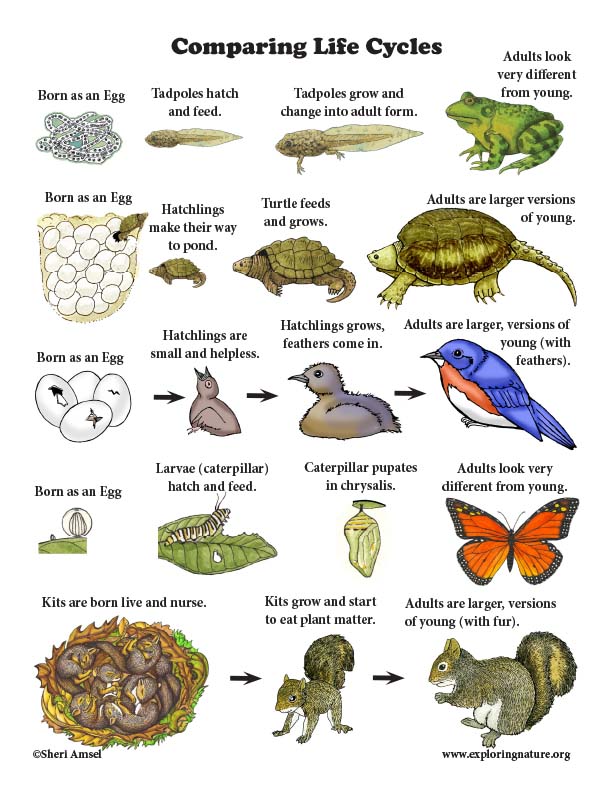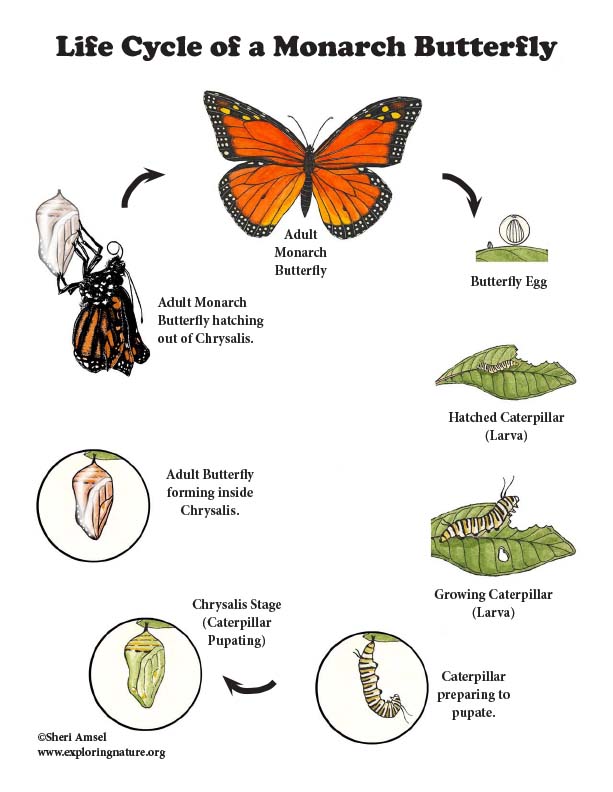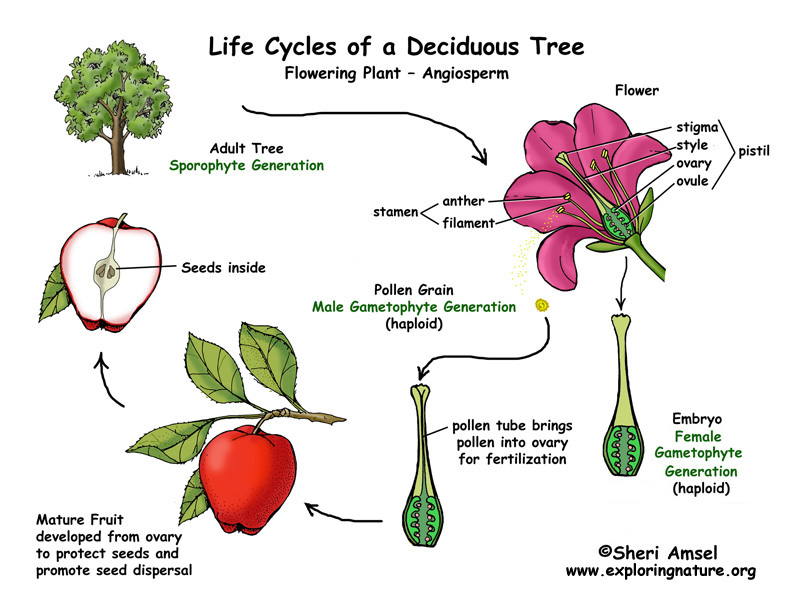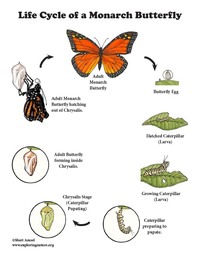

_________________________________________________________________________________________________________________________________________________________
Disciplinary Core Ideas
LS1.B: Growth and Development of Organisms
• Reproduction is essential to the continued existence of every kind of organism. Plants and animals have unique and diverse life cycles. (3-LS1-1)
Performance Expectations Students who demonstrate understanding can:
3-LS1-1. Develop models to describe that organisms have unique and diverse life cycles but all have in common birth, growth, reproduction, and death.
_________________________________________________________________________________________________________________________________________________________
Use the Template and Resource Links to Fulfill NGSS
l. Goals:
ll. Introductory Activities to Assess Prior Knowledge
A. Simple Activities - that assess students’ understanding of life cycles and the importance of reproduction.How Do Animals Give Birth? Matching
Life Cycle Multiple Choice
Mammals Life Cycle Matching
Comparing Life Cycles Matching Quiz
lll. New Knowledge - Text
A. Read about the different kinds of life cycles.Inquiry related to life cycles: Look for evidence out in the school yard of life cycles.
Life Cycles - Authentic Performance
V. Summarize Knowledge - Enduring Understandings
Vl. Next Generation of Science Standards (NGSS) - Grade 3
Disciplinary Core Ideas
LS1.B: Growth and Development of Organisms
• Reproduction is essential to the continued existence of every kind of organism. Plants and animals have unique and diverse life cycles. (3-LS1-1)
Science and Engineering Practices
Developing and Using Models
Modeling in 3–5 builds on K–2 experiences and progresses to building and revising simple models and using models to represent events and design solutions.
• Develop models to describe phenomena. (3-LS1-1)
Connections to Nature of Science
Scientific Knowledge is Based on Empirical Evidence
• Science findings are based on recognizing patterns. (3-LS1-1)
Crosscutting Concepts
Patterns
• Patterns of change can be used to make predictions. (3-LS1-1)
Students who demonstrate understanding can:
3-LS1-1. Develop models to describe that organisms have unique and diverse life cycles but all have in common birth, growth, reproduction, and death. [Clarification Statement: Changes organisms go through during their life form a pattern.] [Assessment Boundary: Assessment of plant life cycles is limited to those of flowering plants. Assessment does not include details of human reproduction.]
Common Core State Standards Connections
ELA/Literacy
RI.3.7 Use information gained from illustrations (e.g., maps, photographs) and the words in a text to demonstrate understanding of the text (e.g., where, when, why, and how key events occur). (3-LS1-1)
SL.3.5 Create engaging audio recordings of stories or poems that demonstrate fluid reading at an understandable pace; add visual displays when appropriate to emphasize or enhance certain facts or details. (3-LS1-1)
Mathematics
MP.4 Model with mathematics. (3-LS1-1)
3.NBT Number and Operations in Base Ten (3-LS1-1)
3.NF Number and Operations—Fractions (3-LS1-1)
Articulation of DCIs across grade-levels:
MS.LS1.B (3-LS1-1)
Animal Life Cycles Bundle for Grade 3-5 - Downloadable Only
This bundle includes 19 Resources about Life Cycles, including: Reading, Color Diagrams, Activities and Testing (25 pages total).
1. Life Cycles Primer for Educators
2. Life Cycle Reading
3. Life Cycle Short Answer Quiz and Answer Sheet (2 pages - Copy Ready) - Reading Comprehension Assessment
4. Life Cycle of a Bullfrog Color Diagram
5. Life Cycle of a Green Frog Sequencing Activity (Copy Ready)
6. Life Cycle Sequencing Answer Sheet Template (For all Life Cycle Activities - Copy Ready)
7. Life Cycle of a Monarch Butterfly Color Diagram (Complete Metamorphosis)
8. Life Cycle of a Monarch Butterfly Sequencing Activity (Copy Ready)
9. Life Cycle of a Grasshopper Color Diagram (Incomplete Metamorphosis)
10. Life Cycle of a Bluebird Color Diagram
11. Life Cycle of a Bluebird Sequencing Activity (Copy Ready)
12. Life Cycle of a Snapping Turtle Color Diagram
13. Life Cycle of a Snapping Turtle Coloring Page (Copy Ready)
14. Comparing Life Cycles Mini-Poster (Color)
15. How Do Animals Give Birth? Matching and Answer Sheet (2 pages - Color)
16. Life Cycle Model Building - Butterfly and Frog (2 pages - Color)
17. Animals and their Young Mini-Poster (Color)
18. Animals and their Young Coloring Page
19. Life Cycles Multiple Choice Test and Answer Sheet (2 pages - Copy Ready)
Also See: Life Cycles Activity Bundle for K-2 - Downloadable Only
When you research information you must cite the reference. Citing for websites is different from citing from books, magazines and periodicals. The style of citing shown here is from the MLA Style Citations (Modern Language Association).
When citing a WEBSITE the general format is as follows.
Author Last Name, First Name(s). "Title: Subtitle of Part of Web Page, if appropriate." Title: Subtitle: Section of Page if appropriate. Sponsoring/Publishing Agency, If Given. Additional significant descriptive information. Date of Electronic Publication or other Date, such as Last Updated. Day Month Year of access < URL >.
Amsel, Sheri. "Grade 3 - 3-LS1 From Molecules to Organisms: Structures and Processes" Exploring Nature Educational Resource ©2005-2024. December 13, 2024
< http://www.exploringnature.org/db/view/Grade-3-3-LS1-From-Molecules-to-Organisms-Structures-and-Processes >
